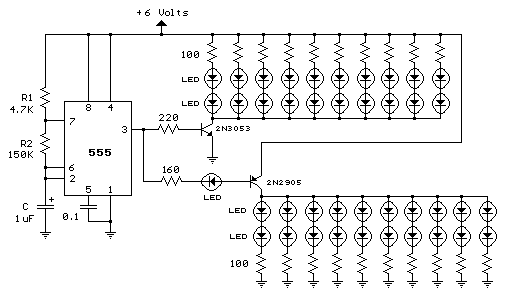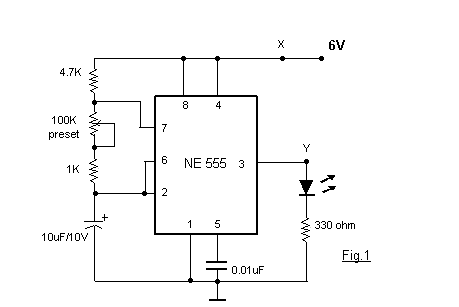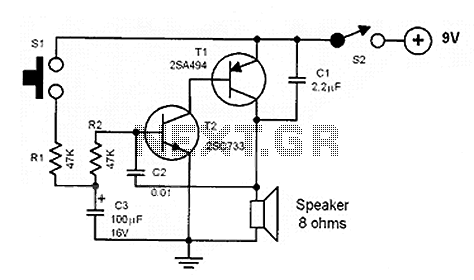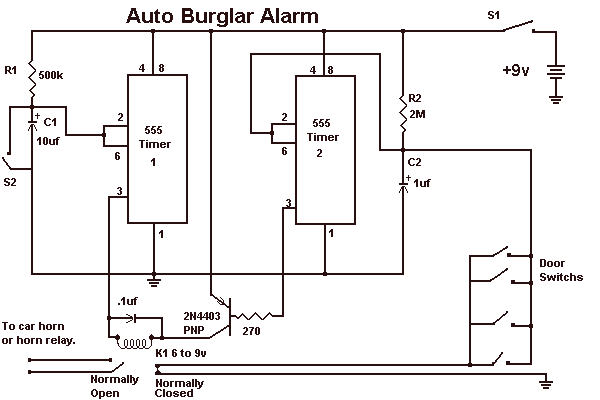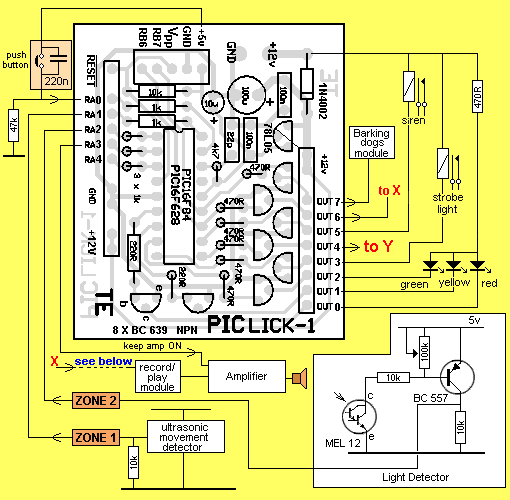
A Dozen Small Cmos Alarm Circuits
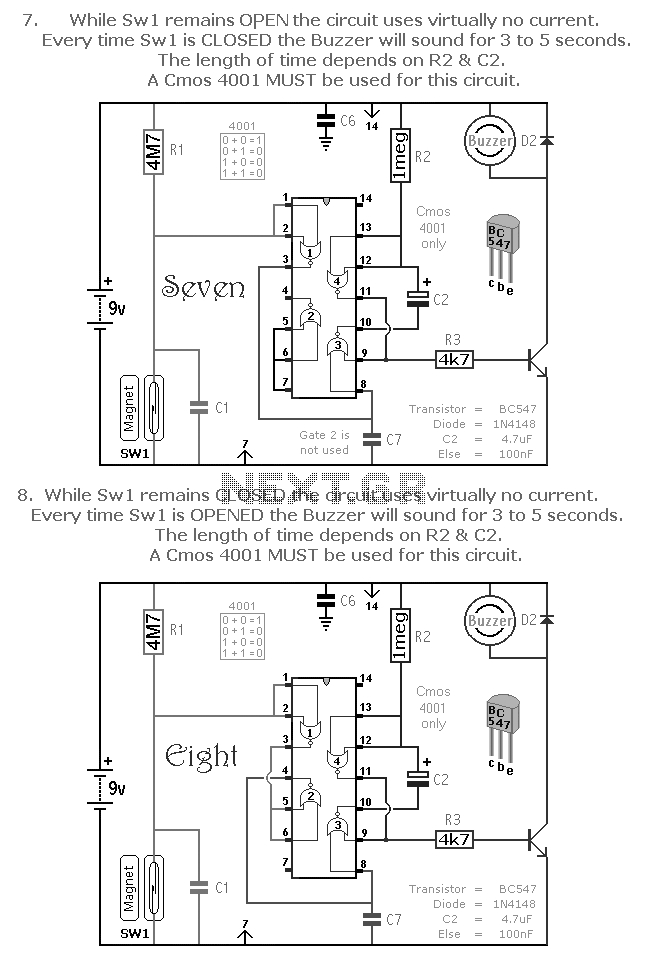
A selection of small self-contained CMOS alarm circuits is presented. The main features of each alarm are indicated on the circuit diagram itself. All circuits exhibit a very low standby current, making them suitable for battery operation. Each pair of circuits is designed to fit on an A4 sheet. While they are primarily categorized as alarm circuits, they can be utilized for various other applications. Switch SW1 can be represented as either a micro-switch or a magnetic-reed contact; however, any switch type that fulfills the requirement can be employed. Multiple switches may also be used if needed for specific applications. The output device is a piezo buzzer that requires approximately 10mA of current. Alternatively, a relay can be used, allowing the relay contacts to control any desired device, provided that the relay coil does not exceed a current draw of about 50mA to prevent potential overload of the transistor.
The described CMOS alarm circuits are designed for versatility and efficiency, catering to a range of applications beyond mere alarm functionality. Each circuit is compact and can be printed on A4 paper, facilitating easy access and implementation. The low standby current is a critical feature, enabling prolonged battery life, which is essential for portable or remote applications where power availability is limited.
The inclusion of a flexible switch option allows for customization based on user needs. For instance, if a magnetic-reed switch is preferred for a security application, it can be easily integrated without altering the fundamental circuit design. The option to use multiple switches enhances the adaptability of the circuit, making it suitable for various configurations, such as multi-zone alarms or different triggering mechanisms.
The output mechanism, primarily a piezo buzzer, is chosen for its low power consumption and high sound output, making it effective for alerting users. The alternative of using a relay opens up further possibilities, such as activating larger devices or integrating the alarm system into existing home automation setups. Care must be taken to ensure that the relay coil's current draw remains within the specified limits to protect the driving transistor from damage.
Overall, these small CMOS alarm circuits represent a practical solution for users seeking customizable, efficient, and low-power alarm systems that can be adapted for multiple applications.A Dozen Small Cmos Alarm Circuits Circuit Description This is a selection of small self-contained alarm circuits. The main features of each alarm are described on the circuit diagram itself. They all have a very low standby current. So they This is a selection of small self-contained alarm circuits. The main features of each alarm are desc ribed on the circuit diagram itself. They all have a very low standby current. So they are ideal for battery operation. Each pair of circuits will print out on an A4 sheet. Although they are described as alarm circuits - they will have other applications. Sw1 is drawn as either a micro-switch or a magnetic-reed contact but - so long as it does the job - you can use whatever type of switch you like. Use more than one switch if it suits your application. The output device is a "piezo" buzzer - requiring a current of about 10mA. But - you can replace it with a relay - and use the relay contacts to switch whatever device you like.
Just make sure that the relay coil doesn`t draw more than about 50mA - otherwise the transistor might be overloaded. 🔗 External reference
The described CMOS alarm circuits are designed for versatility and efficiency, catering to a range of applications beyond mere alarm functionality. Each circuit is compact and can be printed on A4 paper, facilitating easy access and implementation. The low standby current is a critical feature, enabling prolonged battery life, which is essential for portable or remote applications where power availability is limited.
The inclusion of a flexible switch option allows for customization based on user needs. For instance, if a magnetic-reed switch is preferred for a security application, it can be easily integrated without altering the fundamental circuit design. The option to use multiple switches enhances the adaptability of the circuit, making it suitable for various configurations, such as multi-zone alarms or different triggering mechanisms.
The output mechanism, primarily a piezo buzzer, is chosen for its low power consumption and high sound output, making it effective for alerting users. The alternative of using a relay opens up further possibilities, such as activating larger devices or integrating the alarm system into existing home automation setups. Care must be taken to ensure that the relay coil's current draw remains within the specified limits to protect the driving transistor from damage.
Overall, these small CMOS alarm circuits represent a practical solution for users seeking customizable, efficient, and low-power alarm systems that can be adapted for multiple applications.A Dozen Small Cmos Alarm Circuits Circuit Description This is a selection of small self-contained alarm circuits. The main features of each alarm are described on the circuit diagram itself. They all have a very low standby current. So they This is a selection of small self-contained alarm circuits. The main features of each alarm are desc ribed on the circuit diagram itself. They all have a very low standby current. So they are ideal for battery operation. Each pair of circuits will print out on an A4 sheet. Although they are described as alarm circuits - they will have other applications. Sw1 is drawn as either a micro-switch or a magnetic-reed contact but - so long as it does the job - you can use whatever type of switch you like. Use more than one switch if it suits your application. The output device is a "piezo" buzzer - requiring a current of about 10mA. But - you can replace it with a relay - and use the relay contacts to switch whatever device you like.
Just make sure that the relay coil doesn`t draw more than about 50mA - otherwise the transistor might be overloaded. 🔗 External reference
